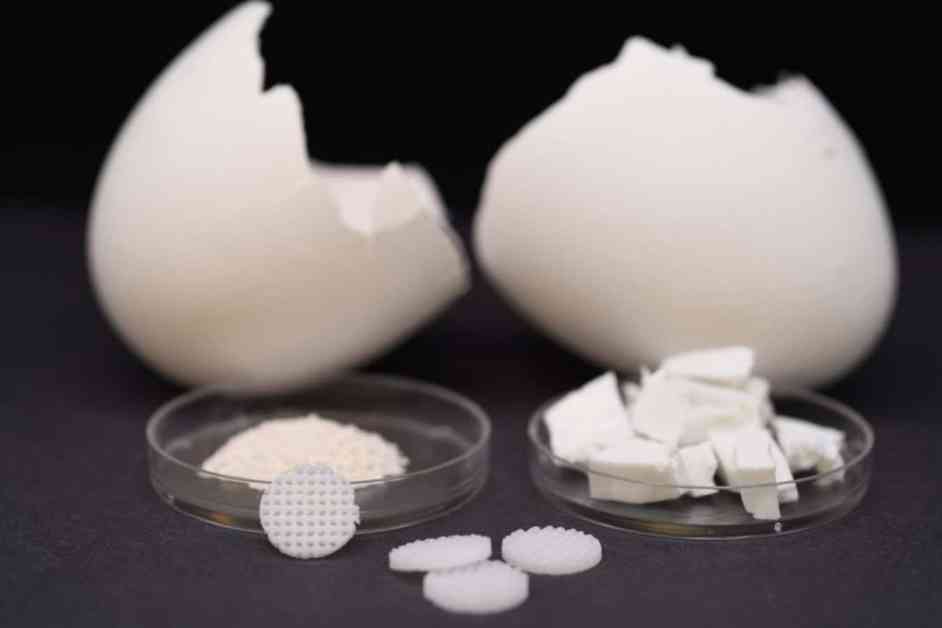Researchers have found a new way to aid in bone regrowth using 3D-printed egg shells. These crushed chicken egg shells have been transformed into a structure that supports bone growth in the laboratory. This innovative approach could potentially revolutionize the field of bone regeneration.
In the human body, bones grow on a scaffold known as the extracellular matrix, which plays a crucial role in guiding and nourishing bone-growing cells. When bones are broken or chipped, the process of bone regeneration can be challenging. Artificial scaffolds are often used to grow bone fragments outside the body, which are later implanted surgically to repair the damage. However, these artificial scaffolds may not always be effective and can lead to complications.
The use of egg shells in bone regeneration is a promising development. By incorporating egg shell microparticles into 3D-printed structures made from plastic, researchers have created a novel scaffold that can support the growth of human bone fragments. This new approach has shown great potential in laboratory settings, offering a more natural and effective way to promote bone regrowth.
The combination of plastic and egg shell microparticles in 3D-printed structures provides a unique environment for bone cells to grow and regenerate. The porous nature of egg shells allows for better nutrient absorption and cell attachment, leading to improved bone growth. This innovative technique could offer a safer and more efficient alternative to traditional artificial scaffolds for bone regeneration.
In addition to its regenerative properties, egg shells are abundant and cost-effective, making them a sustainable option for bone regrowth treatments. The utilization of natural materials like egg shells in medical research highlights the importance of exploring alternative solutions for complex health issues.
Overall, the use of 3D-printed egg shells in bone regrowth represents a significant advancement in the field of regenerative medicine. This innovative approach has the potential to improve outcomes for patients in need of bone repair, offering a safer, more effective, and sustainable alternative to traditional methods. As research in this area continues to evolve, the future of bone regeneration looks promising with the help of 3D-printed egg shells.



